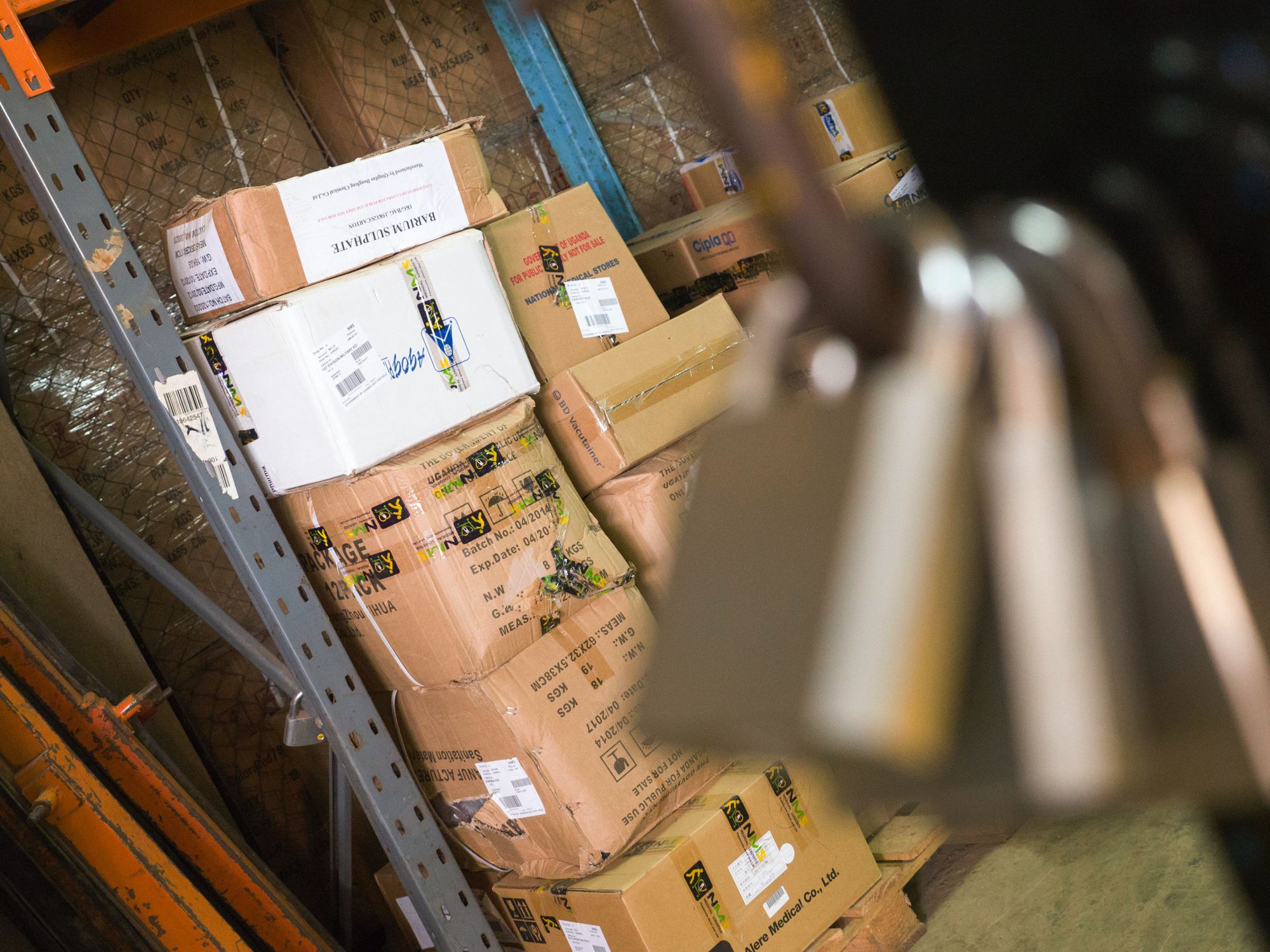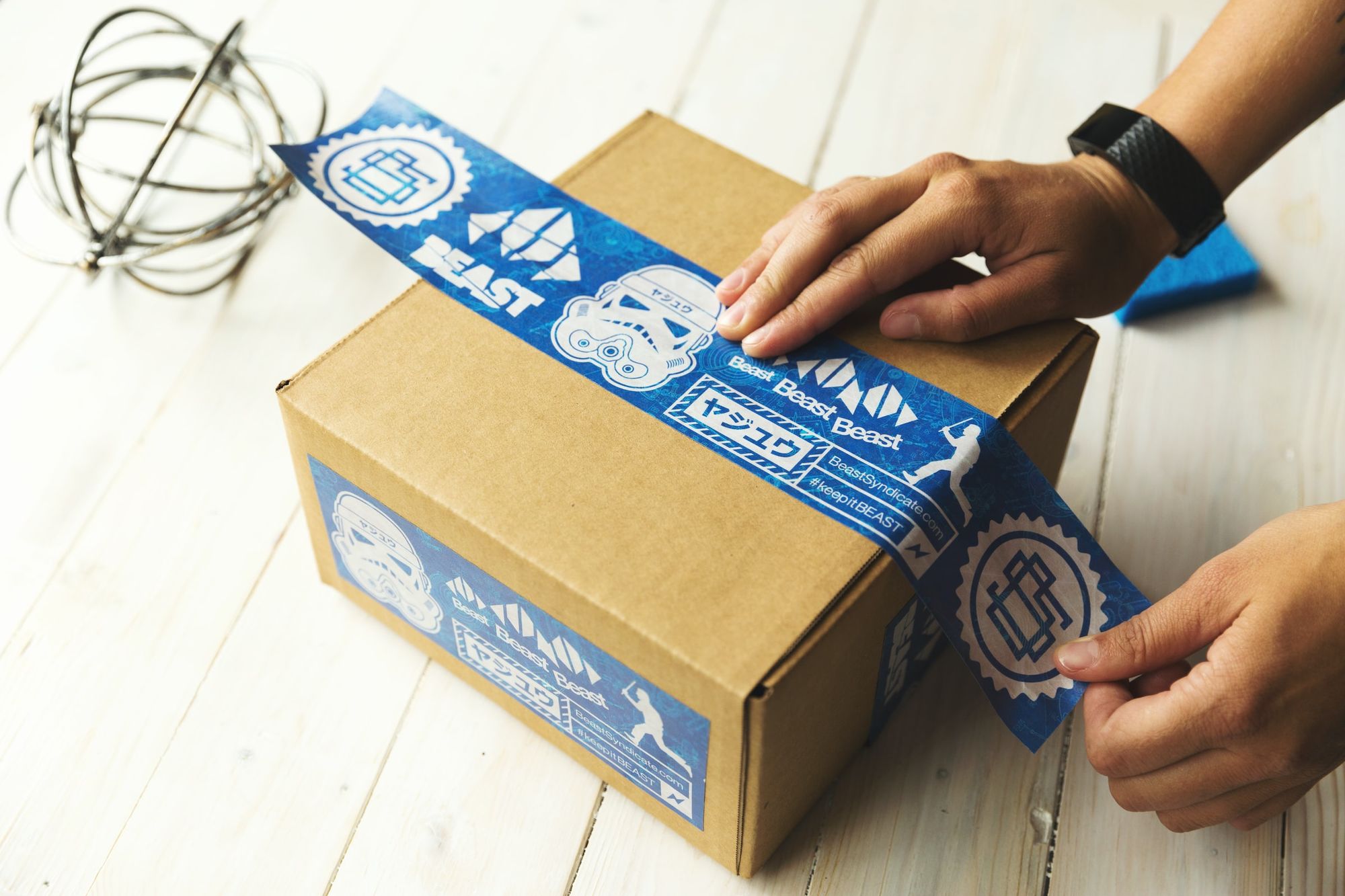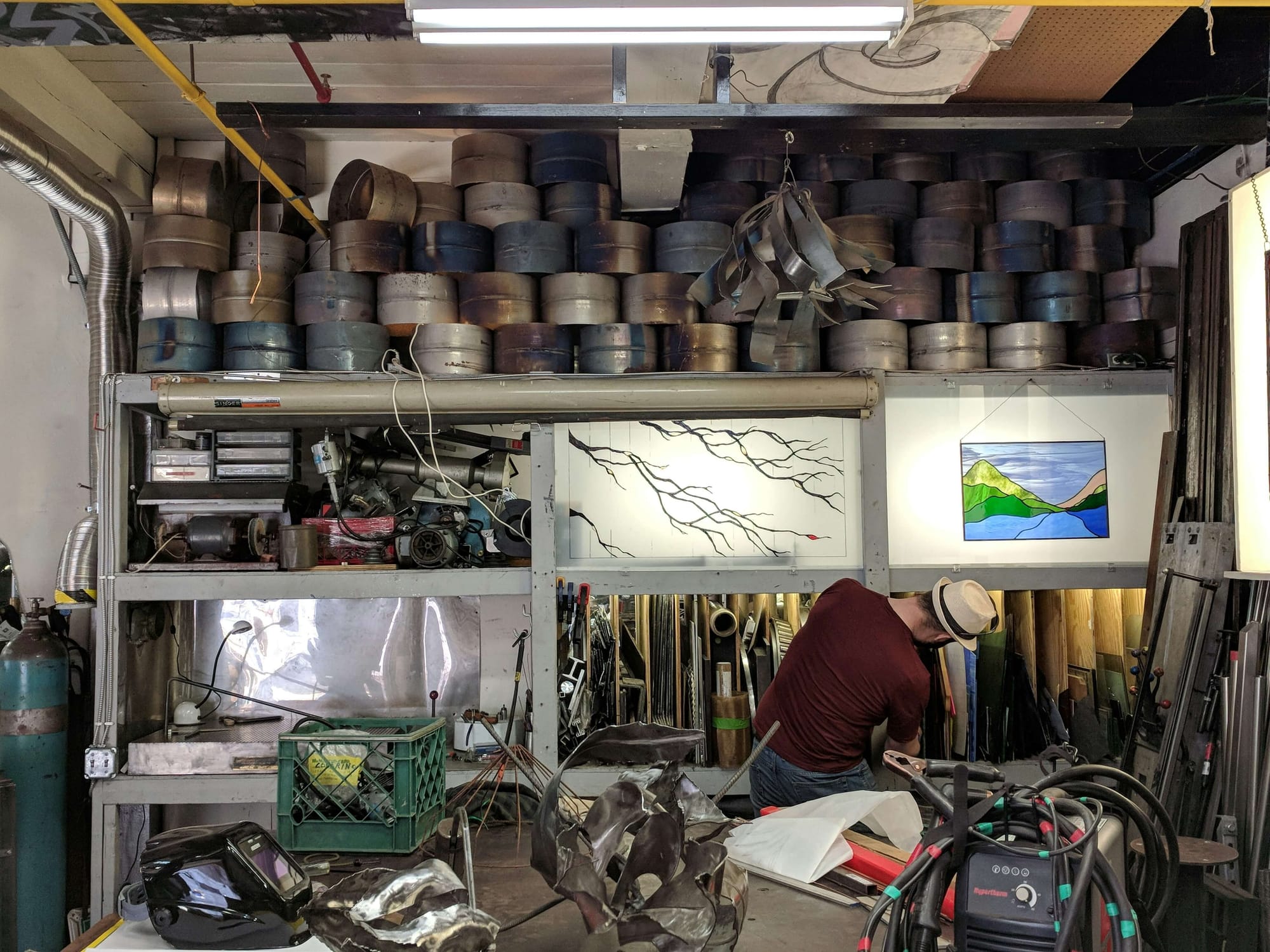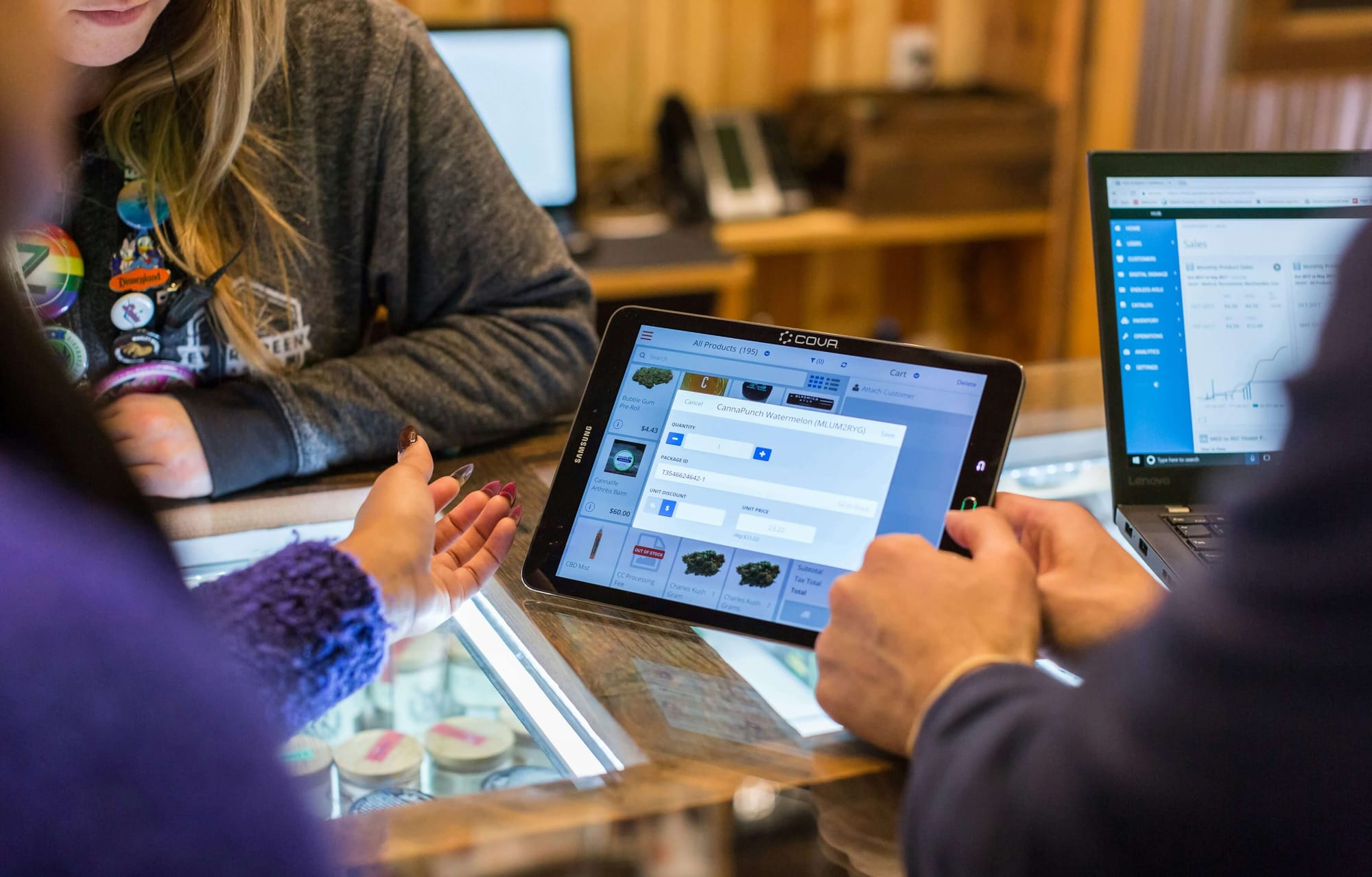According to the International Packaging Solutions Federation, the use of packaging management systems in the US has increased by 20% in the past five years.
Packaging management is an integral part of the product life cycle. It helps protect the product during transport and storage and makes it attractive and easy to use.
A well-designed packaging system can ensure the quality and safety of products. It also helps to protect them from environmental and physical damage. Packaging protects the product and ensures it reaches its destination safely and in perfect condition. It also helps to attract customers and promote the product.
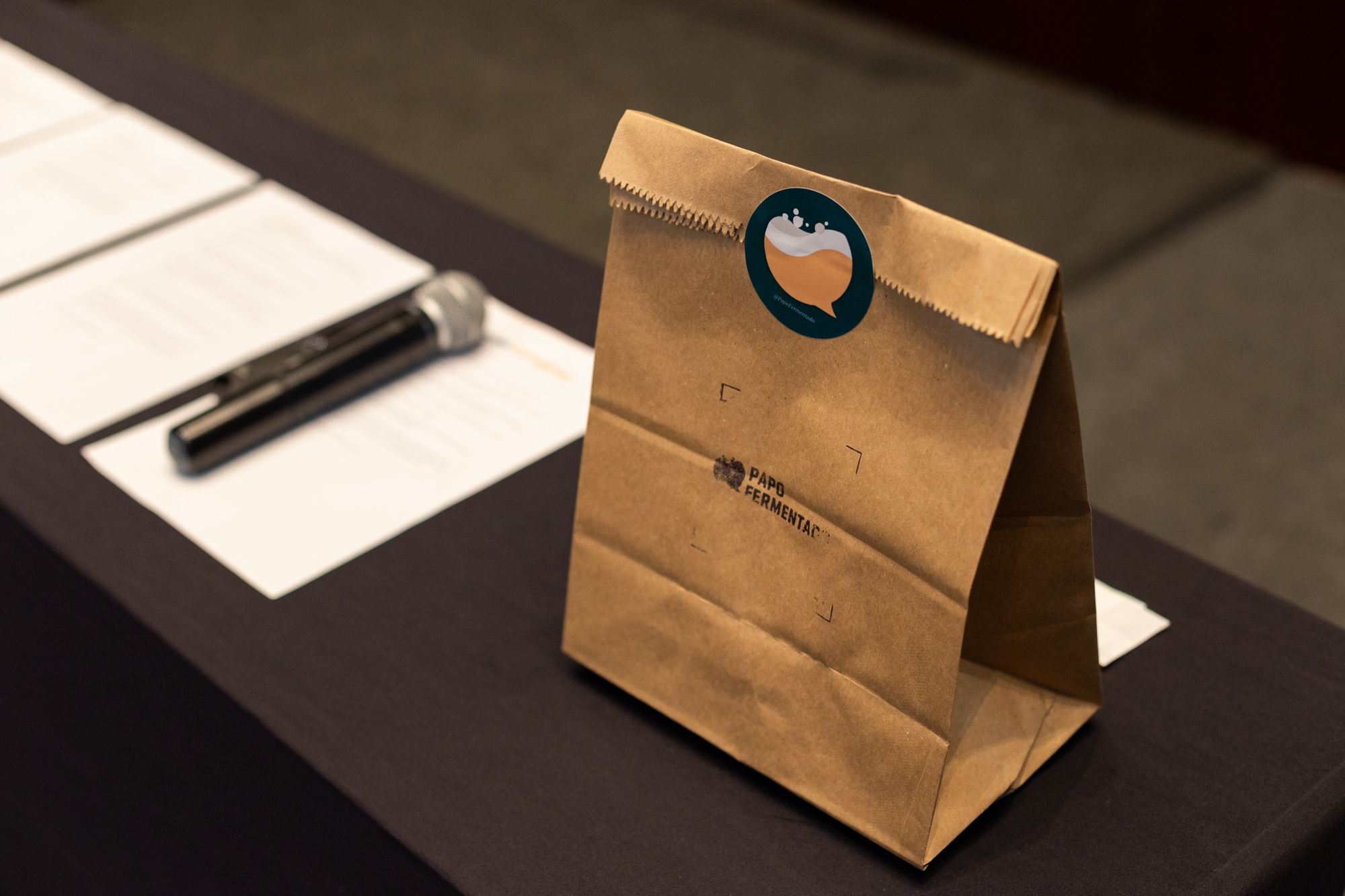
Packaging is also vital for product marketing. Packaging can create a strong and memorable brand image, which can help increase sales. It can also be used to inform customers about the product, its features, and its benefits.
This article examines the key aspects of packaging management systems and how they can help businesses improve efficiency and reduce waste.
Here’s what we shall cover in this post:
- What is Packaging Management?
- How does Packaging Management Work?
- Methods of Packaging Management
- Digital Technologies in Packaging Management
- Future Trends in Packaging Management
- Conclusion
- Key Takeaways
What is Packaging Management?
Packaging management refers to designing, creating, and distributing packaging for products. This process involves many steps, including research and development, design, production, and distribution.
- The goal of packaging management is to ensure that products are packaged in a way that is safe, attractive, and easy to use.
- Packaging management also includes ensuring that the packaging is safe for use and meets all relevant regulations.
- It includes testing the packaging for strength and durability and confirming it complies with environmental regulations.
Overall, packaging management is a crucial step in the production and distribution of products. It helps to protect the product and increase customer satisfaction.
7 Functions of Packaging
Packaging plays a vital role in product production, distribution, and consumption. It serves several functions, which can be grouped into seven main categories. These functions are:
- Protection: Packaging helps to protect the product from damage during transport, storage, and handling. It protects the product from external factors such as dust, moisture, and temperature changes. Protection can be accomplished by using materials such as foam, bubble wrap, and corrugated cardboard.
- Preservation: Packaging helps to preserve the product, keeping it fresh and safe to consume. It is significant for food products but applies to other items such as pharmaceuticals or cosmetics. Preservation can be achieved using aluminum foil, vacuum sealing, or nitrogen flushing.
- Communication: Packaging is an effective way to communicate important information about the product to the consumer. It can include information such as the ingredients, nutritional value, and usage instructions. Packaging can also be used to convey a brand's message or to promote special offers or deals.
- Convenience: Packaging should be designed to be convenient for the consumer. It can include features such as easy-open lids, resealable packaging, or packaging that can be easily recycled.
- Branding: Packaging is an essential aspect of branding, as it helps to create a visual identity for the product. It can include the use of colors, graphics, and logos. Branding can also be used to differentiate a product from its competitors.
- Compliance: Packaging must comply with all relevant safety, health, and environmental regulations. It includes ensuring the packaging is labeled correctly and providing appropriate warnings or safety information.
- Cost-effectiveness: Packaging should be cost-effective for both the manufacturer and the consumer. It can be achieved by using materials and designs that are efficient and affordable, as well as by reducing the amount of packaging used.
Role of Packaging in the Product Lifecycle
Packaging plays a crucial role in the product lifecycle, from its development and production to its distribution, marketing, and disposal. The role of packaging can be broken down into several key stages of the product lifecycle, including:
- Product Development: During the product development stage, packaging can play an essential role in determining the overall design, size, and shape of the product. Packaging can also protect and preserve the product during the development process.
- Production: During the production stage, the packaging is used to protect and preserve the product during transportation, storage, and handling. It also helps to keep the product safe from external factors such as dust, moisture, and temperature changes.
- Distribution: Packaging is used to safely transport products from the manufacturer to the retailer or consumer. It also helps to protect the product during shipping, storage, and handling.
- Marketing: Packaging can be used as a tool for marketing and promotion. It can be designed to grab the consumer's attention and convey important information about the product, such as ingredients, nutritional value, and usage instructions.
- Consumption: Packaging can be designed to be convenient for the consumer to use, making it easier to open and close or reseal the package.
- Disposal: Packaging can be designed to be easily recyclable or biodegradable, reducing the environmental impact of the product.
Factors to be Considered for Package Designing in Product Packaging
Product packaging is an essential aspect of marketing and promoting a product. It is the first thing a customer sees and can play a significant role in purchasing a product. Therefore, it is crucial to consider several factors when designing a package for a product.
- Functionality: The package should be designed to protect the product during transportation and storage. It should also be easy to open and close.
- Sustainability: Packaging should be designed to minimize waste and be environmentally friendly. Packaging made from recycled materials and biodegradable materials is a good option.
- Size and shape: The package should be the appropriate size and shape for the product. It should also be easy to store and transport.
- Labeling: The package should have all the necessary information, such as the product name, ingredients, expiry date, and instructions for use.
- Target audience: The package should appeal to the target audience. It includes considering the age, gender, income level, and lifestyle of the target market. The package should be designed with the consumer in mind and be attractive and relevant to the target audience.
- Cost: The package should be designed to be cost-effective for the manufacturer. It includes considering the materials used, production costs, and shipping costs. The package should also be designed to be durable and to withstand the rigors of shipping and handling.
- Legal requirement: The package should comply with all legal requirements, such as safety warnings, nutrition information, and country-specific regulations.
- Unique selling point: The package should highlight the product's unique selling points, such as being organic, gluten-free, or locally sourced.
- Competitor analysis: It is crucial to consider competitors' packaging to ensure that the package stands out on the shelf.
How does Packaging Management Work?
The steps of packaging management can be broken down into the following sub-points:
Research and Development
This step involves researching the product, its intended use, and the target market. This research determines the product's best packaging materials and design. For example, if the product is a food item, the packaging must be able to keep the food fresh and safe to eat.
Design
In this step, the packaging is created using the information gathered during the research and development phase. It includes deciding on the packaging's size, shape, and materials used.
For example, a food item may be packaged in a box, while an electronic item may be packaged in a plastic bag with foam padding. Designing the packaging also includes deciding on the colors, graphics, and text used.
Production and Distribution
Once the packaging is designed, it is produced and distributed to retailers or customers. It can include manufacturing the packaging, printing it, and shipping it to stores or customers. This step is crucial as it ensures that the packaging is available to the customer at the right time and in quantity.
Compliance
Packaging management also includes ensuring that the packaging is safe for use and meets all relevant regulations. It includes testing the packaging for strength and durability and confirming it complies with environmental regulations.
Cost-effectiveness
Packaging management also includes ensuring that the packaging is cost-effective for both the manufacturer and the consumer. It can be achieved by using materials and designs that are efficient and affordable, as well as by reducing the amount of packaging used.
Sustainability
Packaging management also includes ensuring that the packaging is sustainable and environmentally friendly. It includes using materials that can be easily recycled and designing packaging that can be easily disposed of without harming the environment.
Quality Control
Quality control is an essential part of packaging management. It ensures that the packaging meets the necessary standards and is free of defects before it reaches the customer.
Methods of Packaging Management
Design Thinking
This method uses a user-centered approach to design the packaging. It means that the design is based on the needs and preferences of the target market. This approach can create packaging that is easy to use, attractive and meets the consumer's needs.
Lean Packaging
Lean packaging is a method of packaging management that involves using minimal packaging to protect the product while reducing waste. The goal of lean packaging is to reduce the environmental impact of packaging and lower costs for manufacturers and consumers. It can be achieved by using lightweight materials, reducing the packaging size, and using easily recyclable materials.
The benefits of lean packaging are numerous and include the following:
- Cost Savings: Lean packaging can help to reduce the cost of packaging materials, as well as the cost of shipping and storage. It can result in significant savings for manufacturers and consumers alike.
- Environmental Sustainability: Lean packaging can help to reduce the environmental impact of packaging. It can include reducing the amount of materials used and using easily recyclable materials.
- Increased Efficiency: Lean packaging can help improve the packaging process's efficiency. It can include reducing the time and resources needed to package and ship products.
- Increased Product Visibility: With less packaging, the product can be more visible, making it easier for the customer to identify and purchase.
- Improved Brand Image: Lean packaging can help to enhance a brand's image by demonstrating a commitment to environmental sustainability.
To implement lean packaging, companies can use several strategies, including:
- Material Selection: Choosing lightweight packaging materials, and easily recyclable can help to reduce the environmental impact of packaging.
- Packaging Design: Designing smaller and more efficient packaging can help reduce the amount of materials used and lower costs.
- Process Optimization: Optimizing the packaging process by reducing unnecessary steps can increase efficiency and lower costs.
- Collaboration: Collaborating with suppliers, customers, and other stakeholders can help to identify opportunities for reducing waste and improving sustainability.
- Continuous Improvement: Continuously monitoring and improving the packaging process can help identify further cost savings and sustainability opportunities.
Eco-Friendly Packaging
Eco-friendly packaging is a method of packaging management that involves using materials and designs that are environmentally friendly. It can include using biodegradable materials, reducing the amount of packaging used, and using easily recycled materials.
The goal of eco-friendly packaging is to reduce the environmental impact of packaging and promote sustainability.
The benefits of eco-friendly packaging are numerous and include the following:
- Environmental Sustainability: Eco-friendly packaging helps to reduce the environmental impact of packaging by using materials that are biodegradable or recyclable.
- Cost Savings: Eco-friendly packaging can also help lower costs for manufacturers and consumers by reducing the amount of materials used and making the packaging process more efficient.
- Increased Product Visibility: With less packaging, the product can be more visible, making it easier for the customer to identify and purchase.
- Improved Brand Image: Eco-friendly packaging can help to improve a brand's image by demonstrating a commitment to environmental sustainability.
- Legal Compliance: Eco-friendly packaging helps to comply with laws and regulations related to packaging waste management and environmental protection.
Digital Packaging
Digital packaging is a method of packaging management that involves using digital technologies to design, produce and distribute the packaging. It includes using digital printing and design software to create packaging and digital distribution channels to reach customers.
The goal of digital packaging is to improve efficiency, reduce costs, and increase flexibility in the packaging process.
The benefits of digital packaging are numerous and include the following:
- Cost Savings: Digital packaging can reduce costs by reducing the need for physical prototypes and shortening the time to market.
- Increased Efficiency: Digital packaging can help increase the packaging process's efficiency by automating specific tasks and reducing the need for manual labor.
- Increased Flexibility: Digital packaging allows for quick and easy changes to the packaging design, making it possible to respond quickly to changes in consumer preferences or market conditions.
- Personalization: Digital packaging allows for creating personalized packaging for each customer or product, increasing brand loyalty and customer satisfaction.
- Better Traceability: Digital packaging can help to improve traceability by using digital tracking systems, allowing for better packaging inventory and distribution management.
To implement digital packaging, companies can use several strategies, including:
- Investing in digital design and printing software will allow for faster, more efficient, and more flexible packaging design and production.
- Implementing digital tracking systems will help improve traceability and inventory management.
- Using digital distribution channels will allow for quicker and more efficient packaging distribution to customers.
- Collaborating with other companies specializing in digital packaging can help access the latest technologies and best practices.
- Monitoring and improving the digital packaging process can help identify opportunities for further cost savings and efficiency gains.
Digital Technologies in Packaging Management
Digital technologies have revolutionized how packaging is designed, produced, and distributed. These technologies have made packaging more efficient, cost-effective, and sustainable. Digital technologies in packaging management can be broken down into several key areas, including:
Digital Design: Digital design uses computer software to design and create packaging. This technology has revolutionized how packaging is designed, making the process faster, more efficient, and more cost-effective. There are several key benefits of digital design in packaging management, including:
- Efficiency: Digital design software allows for faster and more efficient packaging design. This software can create 3D models of the packaging, simulate different scenarios, and adjust the design quickly and easily.
- Cost-effectiveness: Digital design can reduce the costs associated with packaging design. It can include reducing the need for physical prototypes and shortening the time to market.
- Customization: Digital design allows for greater flexibility in the design of the packaging. It can include creating different designs for different product lines or customers.
- Sustainability: Digital design can help improve sustainability by reducing the number of materials used in packaging and using easily recyclable materials.
- Branding: Digital design allows for the use of high-quality images and graphics on packaging, which can help to strengthen branding and make products more appealing to consumers.
- Personalization: Digital design allows for personalized packaging for each customer or product, increasing brand loyalty and customer satisfaction.
Digital Printing: Digital printing technology allows using high-quality, full-color images and graphics on packaging. This technology can be used to print small or large runs of packaging quickly and cost-effectively.
Digital Distribution: Digital distribution channels, such as e-commerce and online ordering, allowing faster and more efficient packaging distribution to customers.
Advantages of Digital Distribution in Packaging Management
- Increased Efficiency: Digital distribution in packaging management enables businesses to streamline their packaging process, reducing the amount of manual labor needed. It allows companies to save time and money and increase the overall efficiency of their operations.
- Improved Tracking: Digital distribution in packaging management also provides businesses with an improved tracking system. It allows companies to maintain a better understanding of their inventory and monitor the progress of their packaging process. Additionally, businesses can easily identify any problems in the process and rectify them quickly.
- Enhanced Customer Experience: Digital distribution in packaging management allows businesses to offer customers a better experience. It can include enhanced branding, improved customer service, and faster delivery times. Additionally, companies can use digital distribution to ensure that their products are securely packed, helping to reduce the risk of damage during transit.
Digital distribution in packaging management has significantly impacted the packaging industry, as businesses have increased the efficiency of their operations and provided customers with a better experience.
Additionally, companies have been able to reduce their environmental footprint, as fewer resources are needed to complete the packaging process.
Digital Tracking: Digital tracking systems can be used to track and manage the packaging process, from sourcing materials to delivering the final product. It can help to improve traceability and inventory management.
Automation: Automation technology can automate specific tasks in the packaging process, such as packaging and sealing products. It can increase efficiency and reduce costs.
Personalization: Digital packaging allows for personalized packaging for each customer or product, increasing brand loyalty and customer satisfaction.
Analytics: Digital technologies also allow for the collection and analysis of data related to packaging. This can be used to optimize the packaging process and improve sustainability.
Compliance With Regulations in Packaging Management
Packaging management is an essential aspect of any business that deals with physical goods. It is crucial to ensure that the packaging of products meets specific standards and regulations to protect both the consumer and the environment. This section will discuss the importance of compliance with regulations in packaging management and the benefits it provides.
- Firstly, compliance with regulations ensures that the packaging of products is safe for consumers. It includes ensuring that the packaging is not toxic and does not pose a health risk to people who come into contact with it. Regulations also ensure that packaging is properly labeled and contains information about the contents and potential hazards.
- Secondly, compliance with regulations helps to protect the environment. It includes ensuring that packaging is made from sustainable materials and can be easily recycled. It also includes ensuring that packaging is properly disposed of and does not end up as environmental litter.
- Thirdly, compliance with regulations can save businesses money in the long run. It is because non-compliance can result in fines and penalties, which can be costly for companies. In addition, compliance with regulations can also improve a business's reputation and make it more attractive to consumers who are conscious of environmental and health issues.
There are many resources available to businesses to help them stay informed and comply with regulations in packaging management. These include government websites, industry associations, and consulting firms specializing in packaging compliance. Businesses can also work with packaging suppliers and manufacturers to ensure that their packaging complies with regulations.
Optimizing Supply Chain Management for Packaging
Supply chain management is the process of coordinating and managing the movement of goods from the manufacturer to the end customer. Packaging plays an essential role in this process, and optimizing supply chain management for packaging can help to reduce costs, improve efficiency, and increase customer satisfaction.
- Inventory management: Optimizing inventory management can help to reduce costs and improve efficiency. For example, using smaller and more lightweight packaging can take up less space, reducing storage costs and increasing the number of units that can be stored in a given space.
- Transportation: Optimizing transportation can reduce costs and improve efficiency. For example, by using more durable and stackable packaging, it can be easier to transport and handle, reducing transportation and handling costs.
- Sustainability: Optimizing for sustainability can help to reduce costs and improve efficiency. For example, using packaging made from recycled materials and biodegradable materials can help reduce waste and promote a company's sustainability efforts.
- Product traceability: Optimizing product traceability can help to improve efficiency and increase customer satisfaction. For example, by using barcodes or RFID tags, it can be easier to track products throughout the supply chain, making it easier to identify where products are in the supply chain at any given time.
- Legal requirement: Compliance with legal requirements such as safety warnings, nutrition information, and country-specific regulations is vital for the supply chain management. Companies should be aware of the legal requirements and ensure that their packaging complies with them.
- E-commerce: Optimizing for e-commerce can help to increase customer satisfaction. For example, using packaging that is easy to open and close can make it easier for customers to return or exchange products.
- Supply Chain Partnership: Establishing a strong partnership with suppliers, manufacturers, and logistic partners can help optimize supply chain management. It can also help to share knowledge and expertise and reduce costs.
- Data analysis: Utilizing data analysis, companies can make better decisions, reduce waste and improve efficiency. It can be achieved by collecting data on all aspects of the supply chain, such as inventory levels, transportation costs, and customer complaints.
Future Trends in Packaging Management
The management of product packaging is a vital part of any successful business. In the modern world, packaging has become an integral part of the product experience. It is not only about protecting products but also about creating a memorable experience for customers. As technology evolves, the future of product packaging management is becoming increasingly complex.
Here are some of the key trends that are likely to shape the future of packaging management:
Sustainability
The shift toward sustainability is one of the most important trends in packaging management. Companies are increasingly looking for ways to reduce waste and improve the recyclability of their packaging materials. It includes using environmentally-friendly materials, such as paper, cardboard, and bioplastics, and design features that make recycling or reusing the packaging easier.
Smart Packaging
The use of smart packaging is becoming more widespread. Smart packaging can include RFID tags, barcodes, QR codes, and other technologies, which allow companies to track and monitor their products throughout the supply chain. It can help improve visibility, reduce waste, and allow companies to offer customers new services, such as product tracking and real-time notifications.
Personalization
Personalization is a significant marketing trend and is becoming increasingly crucial in packaging management. Companies can now customize their packaging to reflect their customers' individual preferences. It can include using specialized designs, colors, and materials to create a unique experience for each customer.
Data-Driven Packaging
Data-driven packaging is becoming an increasingly popular trend in packaging management. Companies are now able to leverage data to optimize the design and materials of their packaging. It includes utilizing data to determine the best size, shape, and materials for their products and ensuring that the packaging is as lightweight as possible to reduce costs.
Automation
Automation is becoming increasingly important in packaging management. Companies are now able to automate many of the tasks associated with packagings, such as filling, sealing, labeling, and shipping. It can help reduce costs and increase efficiency while ensuring that products are packaged correctly and safely.
How Deskera Can Assist You?
Deskera MRP allows you to closely monitor the manufacturing process. From the bill of materials to the production planning features, the solution helps you stay on top of your game and keep your company's competitive edge.

Deskera ERP and MRP system can help you:
- Manage production plans
- Maintain Bill of Materials
- Generate detailed reports
- Create a custom dashboard
Deskera ERP is a comprehensive system that allows you to maintain inventory, manage suppliers, and track supply chain activity in real-time, as well as streamline a variety of other corporate operations.
Deskera Books enables you to manage your accounts and finances more effectively. Maintain sound accounting practices by automating accounting operations such as billing, invoicing, and payment processing.
Deskera CRM is a strong solution that manages your sales and assists you in closing agreements quickly. It not only allows you to do critical duties such as lead generation via email, but it also provides you with a comprehensive view of your sales funnel.
Deskera People is a simple tool for taking control of your human resource management functions. The technology not only speeds up payroll processing but also allows you to manage all other activities such as overtime, benefits, bonuses, training programs, and much more. This is your chance to grow your business, increase earnings, and improve the efficiency of the entire production process.
Conclusion
The packaging management of products is a complex process that requires careful consideration and implementation. Companies need to invest in sustainable packaging solutions, as this will help to reduce the amount of waste generated and to ensure the product reaches its destination safely.
Additionally, companies should ensure that their packaging is designed to protect the product from external factors, such as temperature and humidity. Furthermore, ensuring that the packaging is designed to meet customer requirements and is of the highest quality is vital.
Companies must invest in the right equipment and personnel to ensure the best results. With proper packaging management, businesses can reduce costs, improve their reputation, and ensure customer satisfaction.
Key Takeaways
- Packaging management is the process of managing materials used in the production of packaging and the storage, handling, and distribution of the finished product.
- Effective packaging management can reduce costs, improve supply chain efficiency, and reduce waste. It is essential to have an understanding of the materials used in the packaging process, their properties, and how they interact with each other.
- Good packaging design can help to reduce the use of materials and improve product safety. It is essential to ensure that the packaging process meets the customer's requirements and follows the design specifications.
- Packaging materials should be selected based on their ability to protect the product from damage, contamination, and spoilage. Proper packaging labeling should be done to ensure that customers have all the necessary information about the product.
- The packaging process should be monitored to ensure efficiency and cost-effectiveness. Quality control measures should be implemented to ensure that the packaging meets the required standards.
- It is essential to track the movement of the packaging materials and finished product throughout the supply chain. Packaging should be stored and handled to minimize wastage and ensure product safety.
Related Articles
